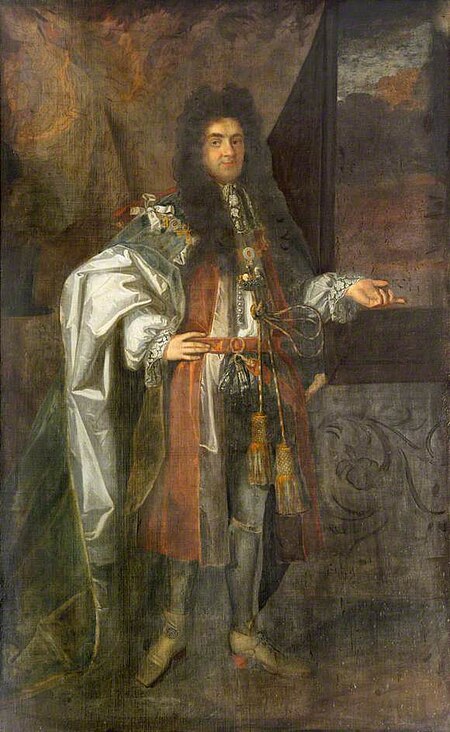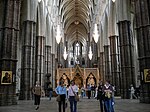Christopher Monck, 2nd Duke of Albemarle
1653 births1688 deaths17th-century Jamaican peopleAll pages needing cleanupBritish Life Guards officers ... and 15 more
British colonial heads of the BahamasChancellors of the University of CambridgeDukes of AlbemarleEnglish MPs 1661–1679EngvarB from May 2015Governors of JamaicaHistory of boxingKnights of the GarterLord-Lieutenants of DevonLord-Lieutenants of EssexMembers of Gray's InnMembers of the Parliament of England (pre-1707) for DevonMembers of the Privy Council of EnglandMonmouth RebellionWikipedia introduction cleanup from May 2015

Christopher Monck, 2nd Duke of Albemarle (14 August 1653 – 6 October 1688) was an English soldier and politician who sat in the House of Commons from 1667 to 1670 when he inherited the Dukedom and sat in the House of Lords.
Excerpt from the Wikipedia article Christopher Monck, 2nd Duke of Albemarle (License: CC BY-SA 3.0, Authors, Images).Christopher Monck, 2nd Duke of Albemarle
Dean's Yard, London Millbank
Geographical coordinates (GPS) Address Website Nearby Places Show on map
Geographical coordinates (GPS)
| Latitude | Longitude |
|---|---|
| N 51.499444444444 ° | E -0.1275 ° |
Address
Westminster Abbey
Dean's Yard 20
SW1P 3PA London, Millbank
England, United Kingdom
Open on Google Maps








